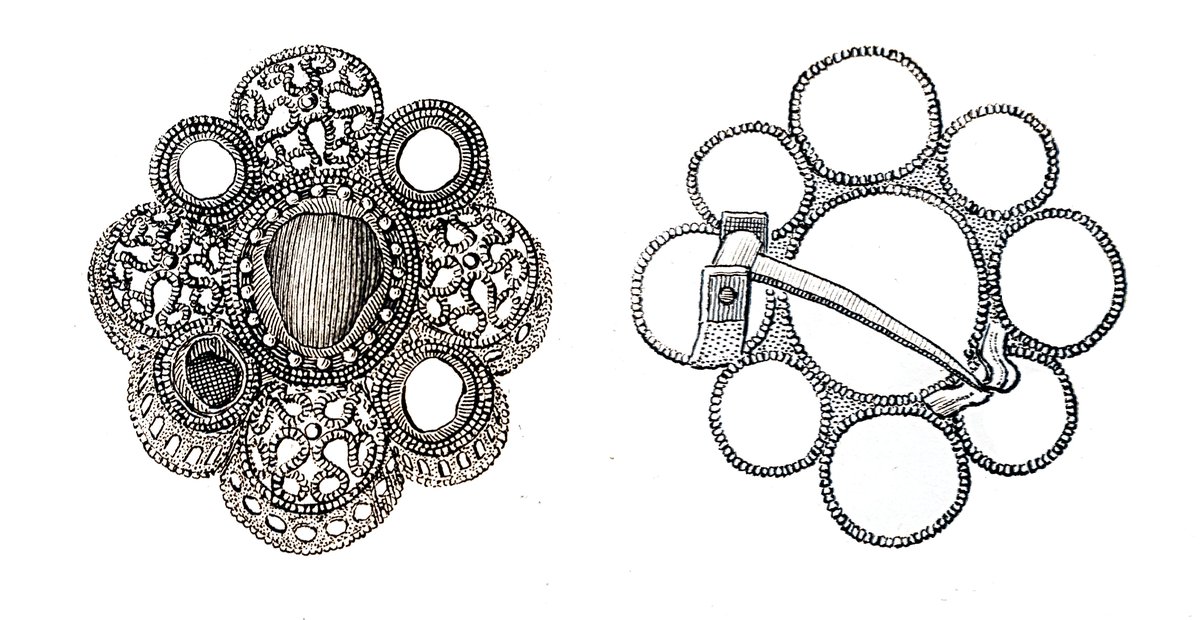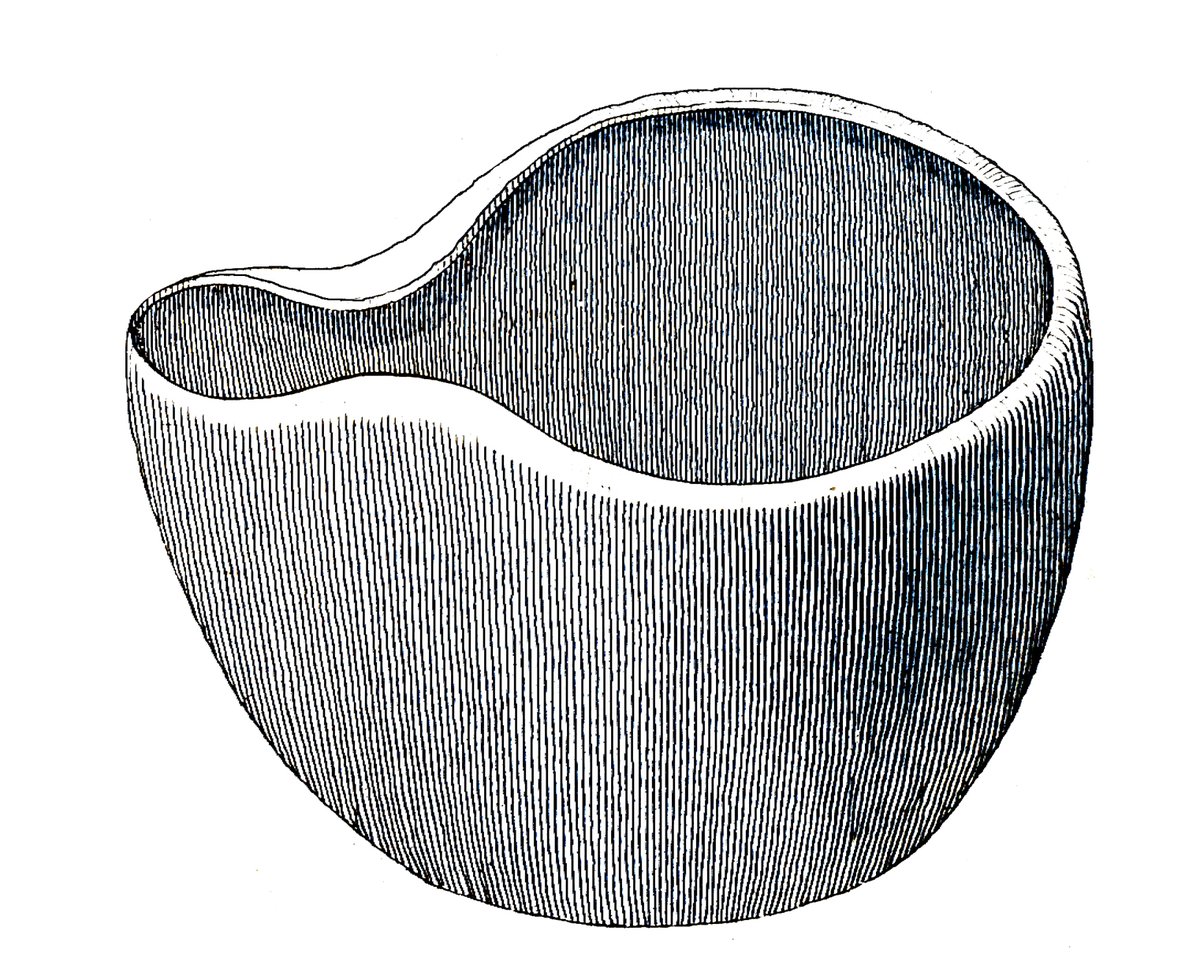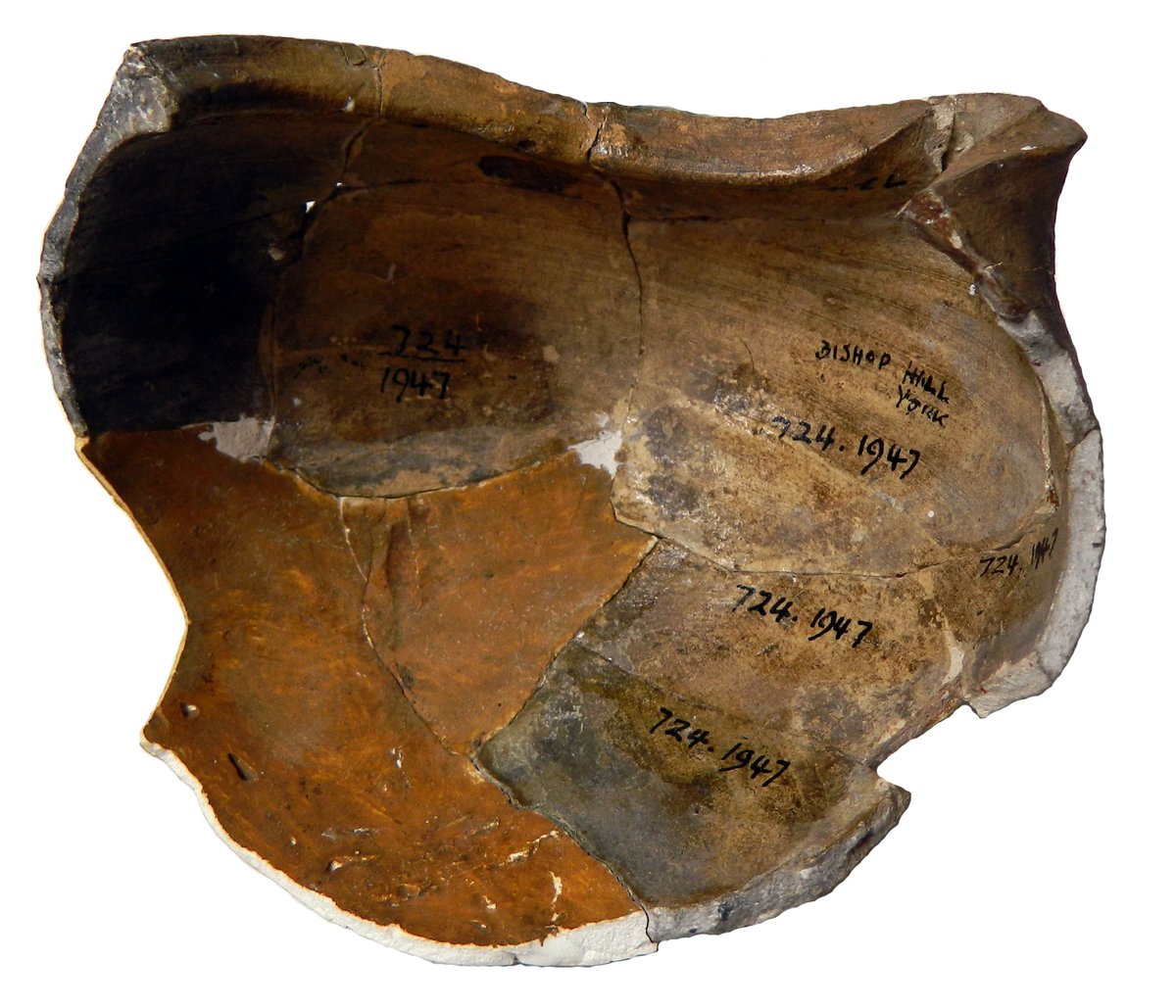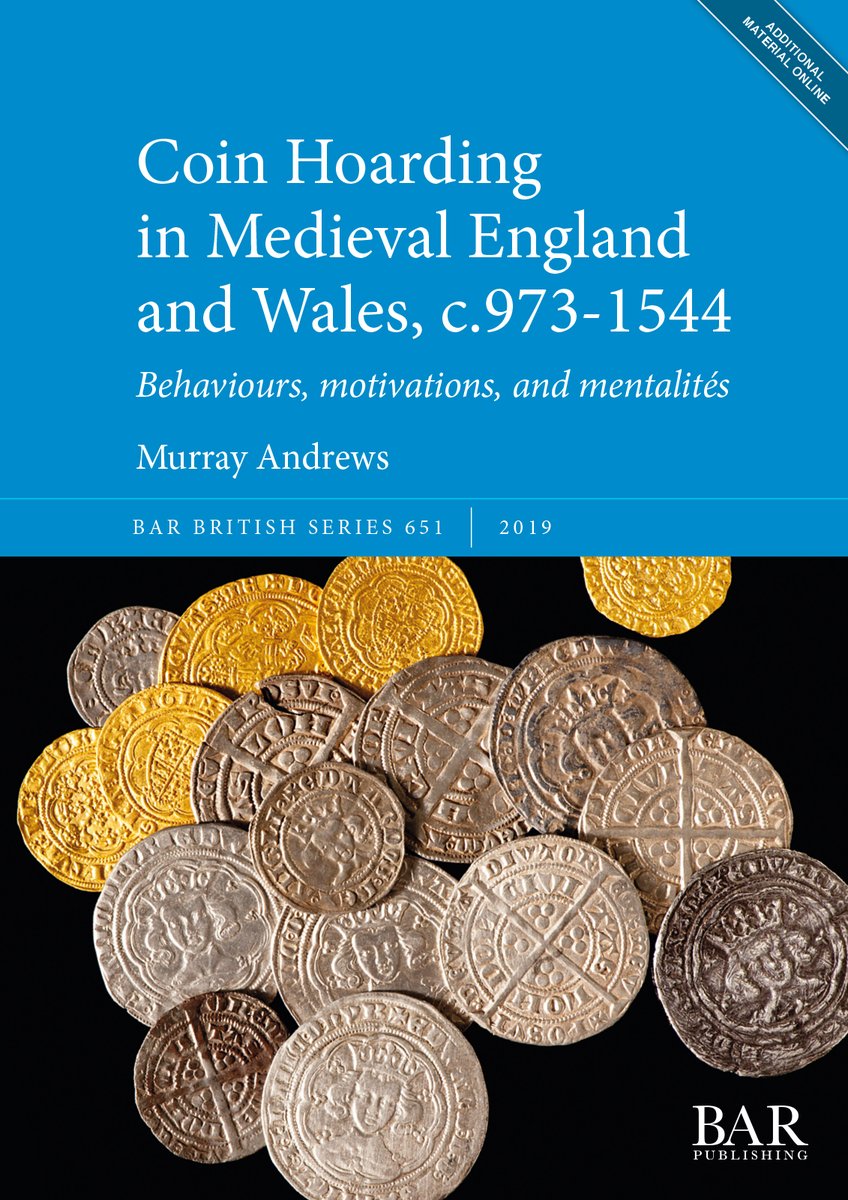Late again for #NumisChat - sorry! But I want to share a story about how modern archaeology can shed new light on old coin finds. In June 1774 a hoard of 11th century silver pennies was found near St Mary at Hill in the City of London. 1/12
The find was published in Archaeologia by the Rev Dr Griffith, the church rector, in 1786. Unusually for a find of this early date, Rev Griffith gives us some good archaeological information about the hoard. 2/12
The hoard consisted of at least 79 silver pennies, the latest of William I& #39;s & #39;Two Sceptres& #39; type, dated to the mid to late 1070s. Alongside the coins, there was a gold filigree brooch, set with a central sapphire that was surrounded with four pearls. 3/12
The coins and the brooch were placed in a ceramic & #39;urn& #39; that was covered by an unusual thin-walled ceramic trifoliate vessel, before being buried in the ground at a depth of c.45-50cm below the 18th century cellar layer. 4/12
Revisiting the hoard in the twenty-first century, the thing that is most interesting about the hoard isn& #39;t the coins, or the brooch (sacrilege!), but the pot... 5/12
The form is distinct, but so is the fabric: according to Griffith it was of & #39;brownish earth, inclining to red, of a stony, granulated texture& #39;. This sounds a lot like what London sherd-nerds call EMCR - & #39;early medieval crucible fabric& #39;. 6/12
Modern excavations in London have told us quite a lot about EMCR. It usually turn up in archaeological contexts dated 1000-1200 - so a good match for the coin dating. 7/12
Examples in this exact trifoliate form are known from the London Guildhall, excavated by @MOLArchaeology. XRF analysis of comparable Saxo-Norman pots, published in 1991 by @LonMidArchSoc ( http://www.lamas.org.uk/archives/special-papers/vince1991.html),">https://www.lamas.org.uk/archives/... suggests that most served as copper or silverworking vessels. 8/12
Interestingly, Griffith noted that the St Mary at Hill vessel & #39;bears evident marks of having been used for the melting of metal& #39;. 9/12
A close parallel for the St Mary at Hill hoard is the find from Bishophill in York. Found near York Castle and buried c.1066, this hoard was buried in a similar vessel, with thin walls, a rounded base, and a trifoliate rim. (Pic taken @YorkshireMuseum, cheers @YMT_Coins !) 10/12
The Bishophill pot is of York splashed ware, which excavation evidence suggests was made west of York c.1050-1150. 11/12
Both pots tell us something about the owners of these hoards. These are specialist industrial ceramics, not the usual thing you have knocking about the house. Whoever had access to them would have been involved in the metalworking industry - perhaps silversmithing. 12/12
None of the coins in either hoard were themselves melted, but this does raise an interesting question: are we looking at the cash savings of silversmiths, or alternatively raw material destined for the pot? 13/12
We& #39;ll never know for sure. But in both cases, it& #39;s humble pottery that lets us pose the question, and gets us closer to the people behind the pennies. Proof, if any was needed, that archaeological context matters! 14/12
Cheers for sticking with me #NumisChat ! And mandatory plug - read more about these and other interesting hoards in my new book, available from @BAR_Publishing at https://www.barpublishing.com/coin-hoarding-in-medieval-england-and-wales-c.973-1544.html">https://www.barpublishing.com/coin-hoar...

 Read on Twitter
Read on Twitter





